You may not be sure whether you need a top-performing 65-inch set or a 75-inch model that performs a little worse but costs about the same. I suggest you go big. A 65-inch TV is the standard size for most households, but if you’re looking to go even bigger, the most logical upgrade is a 75-inch model. It’s a size available in a lot of the best TV series we review at CNET — even those fancy OLED TVs (technically they’re 77 inches, but they’re still included on this list).
If you’re looking to upgrade your viewing experience, stepping up in TV screen size is the best use of your money — more so than a slight increase in image quality, color accuracy, refresh rate, viewing angle, HDR (high dynamic range) performance or any smart TV functionality. However, I’m not advising you to get a 75-inch TV that doesn’t perform well enough to satisfy you. The big screen size isn’t worth that. That’s where our guide comes in: We’re here to help you decide just how much money to spend.
The list below represents the best TVs I’ve reviewed in CNET’s test lab, where I compare them side by side to see which is most worth buying. Currently, my TV lab is my basement, and as usual, I’ve actually reviewed the 65-inch sizes in the series listed below. That said, the 75-inch versions are basically identical beyond screen size. When reviewing the TVs, I consider factors like contrast ratio, color accuracy, viewing angles, the refresh rate, input lag, the TV’s smart capabilities, how many HDMI ports it has and more. Most of these models have game mode and smart TV capabilities that offer you easy access to streaming channels and streaming apps.
Here are my latest recommendations, which I update as I review new TVs, with the following notes to keep in mind.
- Looking for another size? Check out: 43-inch TVs, 55-inch TVs and 65-inch TVs.
- Although most of these TVs are 2021 models, a few came out in 2020. For the 2020 TVs on this list I’ve included a “2021 outlook” section with everything I know about the new models, but in general the 2020 TVs are similar (and often a better bargain) compared to 2021 models.
- This list is updated periodically.

 \n ","topic":"","ttag":"","variant":"","viewguid":"","event":"listicle|image|1","correlationId":"","_destCat":"https:\/\/www.amazon.com\/LG-OLED77G1PUA-Built-Gallery-Design\/dp\/B08WG7L6G8","productName":"Best 77-inch TV, money no object: LG OLED77G1P","formatType":"IMAGE","location":"LIST","position":1,"sku":"OLED77G1PUA","dwLinkTag":"article-body|listicle|image","selector":"#article-body #listicle-e651261b-6715-4f93-99c4-9f38aa63af88 .itemImage"}}” rel=”noopener nofollow” target=”_blank”>
\n ","topic":"","ttag":"","variant":"","viewguid":"","event":"listicle|image|1","correlationId":"","_destCat":"https:\/\/www.amazon.com\/LG-OLED77G1PUA-Built-Gallery-Design\/dp\/B08WG7L6G8","productName":"Best 77-inch TV, money no object: LG OLED77G1P","formatType":"IMAGE","location":"LIST","position":1,"sku":"OLED77G1PUA","dwLinkTag":"article-body|listicle|image","selector":"#article-body #listicle-e651261b-6715-4f93-99c4-9f38aa63af88 .itemImage"}}” rel=”noopener nofollow” target=”_blank”>
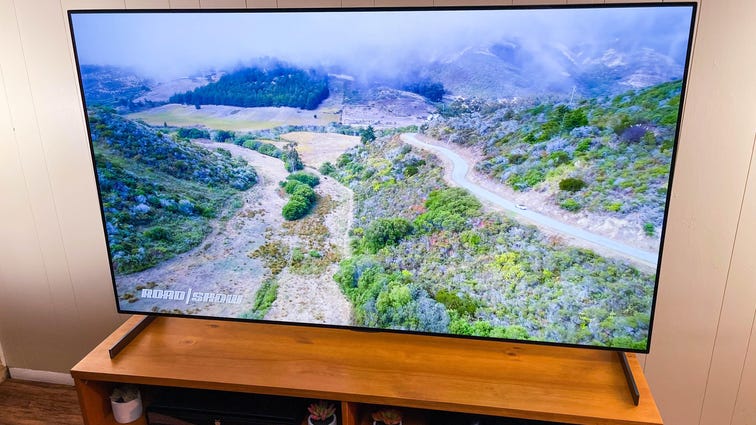

Sarah Tew/CNET
What’s that you say? You just want the best 75-inch(ish) TV and can afford whatever you want? Here you go. In my tests the LG G1 OLED TV and the cheaper C1 below were the best TVs I’ve ever reviewed, with unbeatable contrast, Dolby Vision HDR support, perfect wide viewing angle and excellent uniformity. The main advantage of the G1 is slimmer, more wall-friendly design compared to the C1, so if you value that style and can afford it, this is the TV to get. Note that OLED TVs don’t come in a 75-inch size, so this 77-inch model is the closest equivalent.

 \n ","topic":"","ttag":"","variant":"","viewguid":"","event":"listicle|image|2","correlationId":"","_destCat":"https:\/\/www.amazon.com\/LG-OLED77C1PUB-Alexa-Built-Smart\/dp\/B08WGFKSMW","productName":"Best high-end 77-inch TV for the money: LG OLED77C1PUB","formatType":"IMAGE","location":"LIST","position":2,"sku":"","dwLinkTag":"article-body|listicle|image","selector":"#article-body #listicle-a2f16368-4b8e-4d46-98b8-abd49d1b94e6 .itemImage"}}” rel=”noopener nofollow” target=”_blank”>
\n ","topic":"","ttag":"","variant":"","viewguid":"","event":"listicle|image|2","correlationId":"","_destCat":"https:\/\/www.amazon.com\/LG-OLED77C1PUB-Alexa-Built-Smart\/dp\/B08WGFKSMW","productName":"Best high-end 77-inch TV for the money: LG OLED77C1PUB","formatType":"IMAGE","location":"LIST","position":2,"sku":"","dwLinkTag":"article-body|listicle|image","selector":"#article-body #listicle-a2f16368-4b8e-4d46-98b8-abd49d1b94e6 .itemImage"}}” rel=”noopener nofollow” target=”_blank”>


David Katzmaier/CNET
Currently available for nearly a thousand less than the G1 above, and with picture quality that’s basically just as good, the C1 is a better choice overall for people who want a really nice OLED TV but don’t have money to burn. The only real advantage to the G1 is that slim styling, but the C1 is pretty slim itself. As with the G1, it’s not available in a 75-inch size, so 77 is as close as it gets for this list.

 \n ","topic":"","ttag":"","variant":"","viewguid":"","event":"listicle|image|3","correlationId":"","_destCat":"https:\/\/www.amazon.com\/SAMSUNG-75-Inch-Class-QN90A-Built\/dp\/B08V39W74P","productName":"Best 75-inch OLED alternative: Samsung QN75QN90A","formatType":"IMAGE","location":"LIST","position":3,"sku":"QN75QN90AAFXZA","dwLinkTag":"article-body|listicle|image","selector":"#article-body #listicle-fc38a606-37af-4b71-b686-cae6be5725ae .itemImage"}}” rel=”noopener nofollow” target=”_blank”>
\n ","topic":"","ttag":"","variant":"","viewguid":"","event":"listicle|image|3","correlationId":"","_destCat":"https:\/\/www.amazon.com\/SAMSUNG-75-Inch-Class-QN90A-Built\/dp\/B08V39W74P","productName":"Best 75-inch OLED alternative: Samsung QN75QN90A","formatType":"IMAGE","location":"LIST","position":3,"sku":"QN75QN90AAFXZA","dwLinkTag":"article-body|listicle|image","selector":"#article-body #listicle-fc38a606-37af-4b71-b686-cae6be5725ae .itemImage"}}” rel=”noopener nofollow” target=”_blank”>
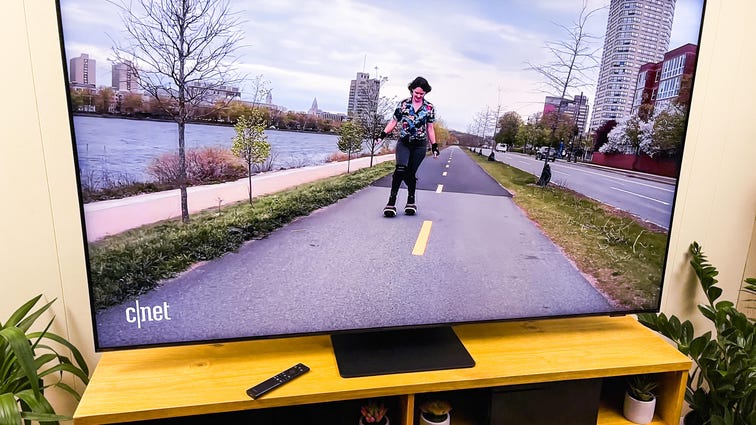

David Katzmaier/CNET
Looking for a high-end TV with spectacular image quality, but don’t want an OLED? The Samsung QN90A is your best bet. This TV uses QLED tech augmented by mini-LED, for a brighter image than any OLED TV. The spectacular contrast of OLED still won out in my side-by-side tests, but the QN90A comes closer than ever.

 \n ","topic":"","ttag":"","variant":"","viewguid":"","event":"listicle|image|4","correlationId":"","_destCat":"https:\/\/www.amazon.com\/Sony-XR75X90J-Soundbar-Subwoofer-Accessory\/dp\/B0972T136N\/","productName":"Best midpriced 75-inch alternative to TCL, Vizio: Sony XR75X90J","formatType":"IMAGE","location":"LIST","position":4,"sku":"XR-75X90J","dwLinkTag":"article-body|listicle|image","selector":"#article-body #listicle-671c24f3-e7b6-48eb-a12c-37df585568aa .itemImage"}}” rel=”noopener nofollow” target=”_blank”>
\n ","topic":"","ttag":"","variant":"","viewguid":"","event":"listicle|image|4","correlationId":"","_destCat":"https:\/\/www.amazon.com\/Sony-XR75X90J-Soundbar-Subwoofer-Accessory\/dp\/B0972T136N\/","productName":"Best midpriced 75-inch alternative to TCL, Vizio: Sony XR75X90J","formatType":"IMAGE","location":"LIST","position":4,"sku":"XR-75X90J","dwLinkTag":"article-body|listicle|image","selector":"#article-body #listicle-671c24f3-e7b6-48eb-a12c-37df585568aa .itemImage"}}” rel=”noopener nofollow” target=”_blank”>
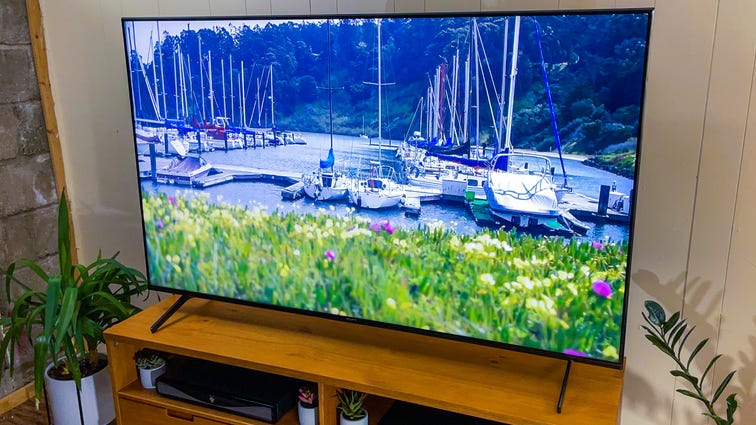

David Katzmaier/CNET
With excellent picture quality, anchored by full-array local dimming and plenty of brightness to make 4K HDR content shine, the X90J is Sony’s answer to the TCL 6-Series and step-up Vizio models. This LED TV’s sleek looks and the Google TV operating system score additional points, as does its next-gen console support (it has 4K/120fps inputs and Sony promises VRR… sometime) and built-in NextGen TV tuner. If you want an “S” brand, this is one of the best values we’ve tested.

 \n ","topic":"","ttag":"","variant":"","viewguid":"","event":"listicle|image|5","correlationId":"","_destCat":"https:\/\/www.amazon.com\/Samsung-QN75Q60AAFXZA-Premium-Extended-Protection\/dp\/B08ZCKHTVT","productName":"Best 75-inch midrange TV design, features: Samsung QN75Q60A","formatType":"IMAGE","location":"LIST","position":5,"sku":"QN75Q60AAFXZA","dwLinkTag":"article-body|listicle|image","selector":"#article-body #listicle-eeda0af8-8f23-4e9d-a85e-2374a12df9d7 .itemImage"}}” rel=”noopener nofollow” target=”_blank”>
\n ","topic":"","ttag":"","variant":"","viewguid":"","event":"listicle|image|5","correlationId":"","_destCat":"https:\/\/www.amazon.com\/Samsung-QN75Q60AAFXZA-Premium-Extended-Protection\/dp\/B08ZCKHTVT","productName":"Best 75-inch midrange TV design, features: Samsung QN75Q60A","formatType":"IMAGE","location":"LIST","position":5,"sku":"QN75Q60AAFXZA","dwLinkTag":"article-body|listicle|image","selector":"#article-body #listicle-eeda0af8-8f23-4e9d-a85e-2374a12df9d7 .itemImage"}}” rel=”noopener nofollow” target=”_blank”>
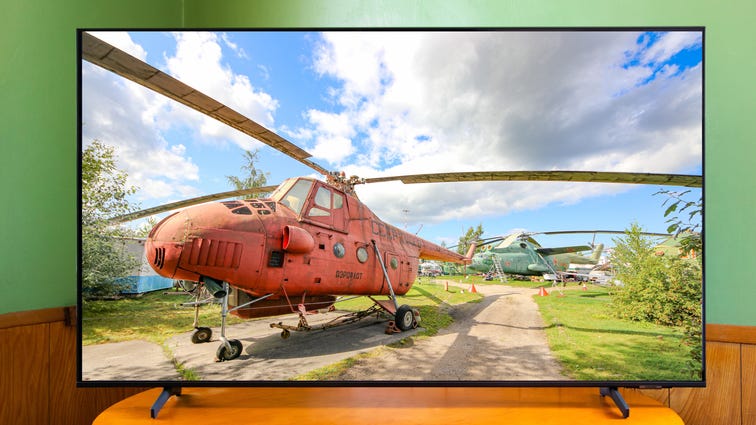

Geoffrey Morrison/CNET
Samsung sells more TVs than anyone, and one of the most popular is the Q60A series. Its sleek design stands out compared to the other TVs on this list — although the ultrathin OLED models are even sleeker — and offers better features and image quality than budget models like the TCL 4-Series. The TVs above are superior values but if you want a 75-inch Samsung TV and can’t afford the QN90A, this is a great choice.

 \n ","topic":"","ttag":"","variant":"","viewguid":"","event":"listicle|image|6","correlationId":"","_destCat":"https:\/\/www.amazon.com\/TCL-Class-UHD-Smart-Roku\/dp\/B08GW31GLZ","productName":"Best budget 75-inch TV: TCL 75S435","formatType":"IMAGE","location":"LIST","position":6,"sku":"75S435","dwLinkTag":"article-body|listicle|image","selector":"#article-body #listicle-38c04905-d766-418c-8809-2531e454182f .itemImage"}}” rel=”noopener nofollow” target=”_blank”>
\n ","topic":"","ttag":"","variant":"","viewguid":"","event":"listicle|image|6","correlationId":"","_destCat":"https:\/\/www.amazon.com\/TCL-Class-UHD-Smart-Roku\/dp\/B08GW31GLZ","productName":"Best budget 75-inch TV: TCL 75S435","formatType":"IMAGE","location":"LIST","position":6,"sku":"75S435","dwLinkTag":"article-body|listicle|image","selector":"#article-body #listicle-38c04905-d766-418c-8809-2531e454182f .itemImage"}}” rel=”noopener nofollow” target=”_blank”>
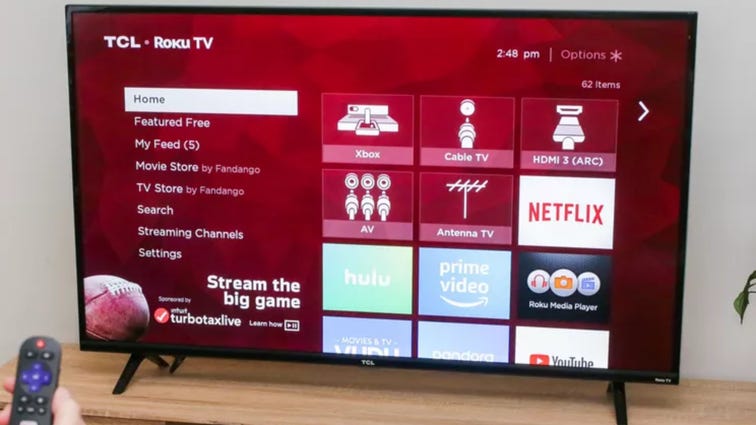

Sarah Tew/CNET
Roku is our favorite platform for streaming apps like Netflix, and it’s even better baked into this 75-inch 4K ultra HD TV. Image quality on this 4K UHD TCL can’t beat any of the models above — its 4K resolution and HDR compatibility don’t do anything to help the picture — but it’s perfectly fine for most people, especially at this price.

 \n ","topic":"","ttag":"","variant":"","viewguid":"","event":"listicle|image|7","correlationId":"","_destCat":"https:\/\/www.amazon.com\/TCL-Dolby-Vision-QLED-Smart\/dp\/B08C67986B","productName":"Best 75-inch TV for the money: TCL 75R635","formatType":"IMAGE","location":"LIST","position":7,"sku":"75R635","dwLinkTag":"article-body|listicle|image","selector":"#article-body #listicle-e1be065e-5cc1-4a9e-8c14-ee1d73ec4e2b .itemImage"}}” rel=”noopener nofollow” target=”_blank”>
\n ","topic":"","ttag":"","variant":"","viewguid":"","event":"listicle|image|7","correlationId":"","_destCat":"https:\/\/www.amazon.com\/TCL-Dolby-Vision-QLED-Smart\/dp\/B08C67986B","productName":"Best 75-inch TV for the money: TCL 75R635","formatType":"IMAGE","location":"LIST","position":7,"sku":"75R635","dwLinkTag":"article-body|listicle|image","selector":"#article-body #listicle-e1be065e-5cc1-4a9e-8c14-ee1d73ec4e2b .itemImage"}}” rel=”noopener nofollow” target=”_blank”>
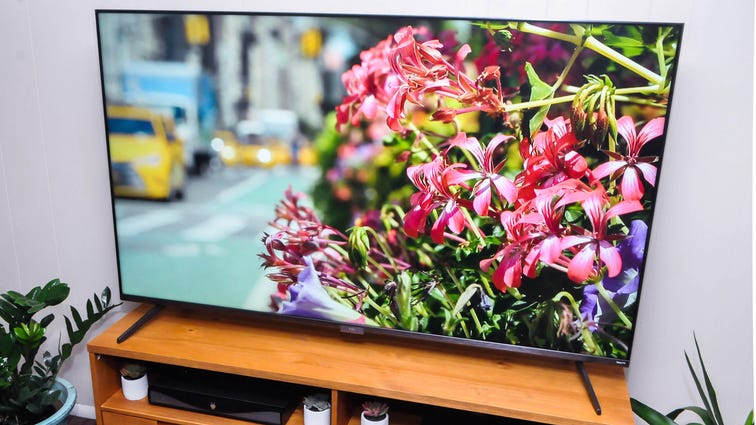

David Katzmaier/CNET
No TV I’ve ever tested offers this much picture quality for as little cash. The TCL 6-Series has an excellent image, thanks to mini-LED tech and well-implemented full-array local dimming that helps it run circles around just about any other TV at this price. It’s also a solid choice for gamers with a THX mode that combines low input lag and high contrast. As if that’s not enough, the Roku TV operating system is our hands-down favorite.
2021 outlook: This TCL Roku TV came out in 2020 but will stay on sale throughout 2021 and remains my top choice so far. TCL also sells an 8K version of the 6-Series, but I don’t think it’s worth the extra money, as well as a Google-powered version I have yet to review (although according to TCL its image quality is the same as this Roku version).
Other stuff to know about buying a new TV
I’m pretty sure you’d be happy with any one of the TVs above, but a new smart TV set can be a big investment, so maybe you’re looking for a bit more information. Here’s a quick and dirty list.
- In my opinion, bigger is better. Big TVs are cheaper than ever, and your money is best spent on large screen sizes rather than a slight upgrade in image quality.
- If you don’t like the built-in smart TV system, you can always add a media streamer for more content. They’re cheap and easy to use, and receive updates more frequently than most smart TVs. See the best streaming devices here.
- Most TVs have built-in speakers with terrible sound quality, so it’s worthwhile to pair your new set with a soundbar or other speaker system. Good ones start at around $100. See the best soundbars here.
Looking for even more info? Here’s everything to know (and more) about buying a new TV.


